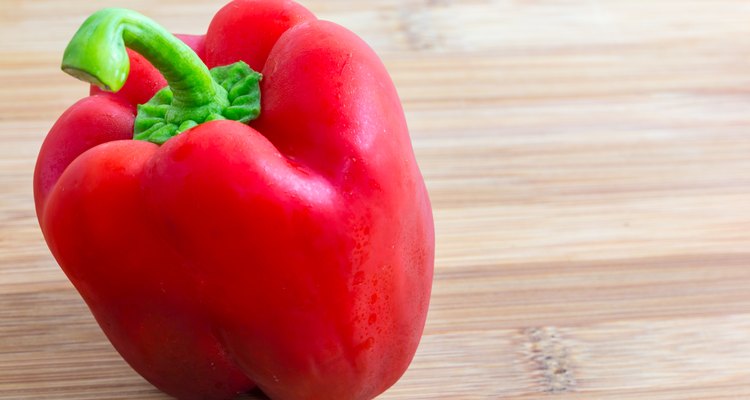
rookiephoto19/iStock/Getty Images
Drying is an effective way to preserve a bounty of red bell peppers, which are simply green bell peppers that are allowed to ripen on the vine. The additional ripening time results in a bright red color and a sweeter flavor. Once red bell peppers are dried, crush the peppers and use the flakes to add color, nutrition and a subtle, sweet flavor to soups, soups, eggs or baked dishes.
Preparation
To keep red bell peppers fresh until you're ready to dry them, store the peppers, unwashed, in the crisper drawer of your refrigerator. Wash the peppers only when you're ready to dry them, as storing moist peppers in the refrigerator causes them to deteriorate faster. Place the clean peppers on a cutting board and cut the top from the peppers. Cut the peppers in half lengthwise, and then use a paring knife to remove the pith -- the white stuff that connects the seeds to the pepper -- and seeds. Cut the peppers into thin slices no more than 1/4-inch. Thicker slices are often leathery when dried and may not be crisp enough to make flakes.
Blanching
Blanching red bell peppers in boiling water preserves the color and flavor of the peppers. To blanch the peppers, fill a large pot approximately one-half full with water, and then bring the water to a full boil. Place the peppers in a metal steamer basket or a mesh or cheesecloth pouch. Immerse the peppers in the water and set a kitchen timer for four minutes as soon as the water returns to a rolling boil. Remove the peppers from the water when the timer rings, immediately transfer the peppers to a bowl filled with ice water. Allow the peppers to dry for 4 minutes. Drain thoroughly.
Dehydrator
An electric dehydrator is an effective way to dry red bell peppers, as the dehydrator maintains a low, even temperature. Many dehydrators have fans that circulate the air and decrease drying time. To dehydrate red bell peppers, arrange the sliced peppers in a single layer on the screens. Allow space between the peppers for air to circulate freely. Drying time depends on the size of the peppers, but may take as long as eight to 12 hours. Check the peppers often, stirring to promote even drying. The peppers are dry when the slices are crisp and brittle.
Oven
Oven drying is an acceptable method for dehydrating bell peppers, but the higher temperature of the oven necessitates careful attention. To dry bell peppers in an oven, preheat the oven to 140 degrees Fahrenheit. Spread the sliced peppers in a single layer on a baking tray and put the trays in the oven.To ensure the heat is maintained between 145 and 150 degrees, place an oven thermometer on the tray. Check the thermometer often and if the temperature is too high, prop the oven door open to lower the temperature. To prevent scorching, turn off the heat and open the oven door wide for about an hour when the peppers appear nearly dry. Drying time may require twice as long as an electric dehydrator.
Flakes
To turn dried red peppers into flakes, crush the peppers with a rolling pin or a wooden mallet. One red bell pepper nets about 1/4 cup of pepper flakes. Store the red bell pepper flakes in airtight storage containers or resealable plastic bags.
Related Articles

How to Store Hot Peppers
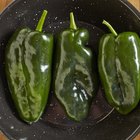
How to Broil Poblano Peppers in the Oven

How to Preserve Bell Peppers for Use ...
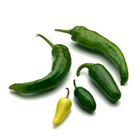
How to Dry Jalapenos
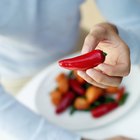
How to Freeze Cayenne Pepper
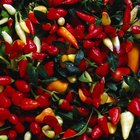
How to Freeze Cherry Peppers

How to Ripen Red Chili Peppers
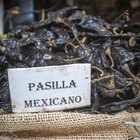
How to Cook a Pasilla Chili

How to Roast & Freeze Habanero and ...

Do Jalapenos Need to Be Refrigerated?

How to Dry Tomatoes in the Oven
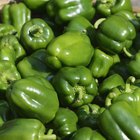
How Do I Blanch Green Peppers?
How to Pickle Tabasco Peppers With ...
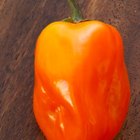
How to Grind Habanero Peppers

How to Preserve Pimentos

How to Dry Artichokes

How to Blanch Cashews

How to make Stuffed Jalapeno Peppers ...
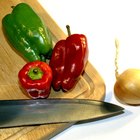
The Best Pepper Plants for Salsa

How to Store Brussels Sprouts
References
Resources
Writer Bio
M.H. Dyer began her writing career as a staff writer at a community newspaper and is now a full-time commercial writer. She writes about a variety of topics, with a focus on sustainable, pesticide- and herbicide-free gardening. She is an Oregon State University Master Gardener and Master Naturalist and holds a Master of Fine Arts in creative nonfiction writing.
Photo Credits
rookiephoto19/iStock/Getty Images